In Somaliland, Ramadan celebrations are often held through community gatherings, where Ramadan duties are preached, people are encouraged to forgive each other during the holiest month and advised to share what they have been blessed with to distribute it among those who are not so fortunate. The local mosques, madras(schools), and community gatherings are organized to prepare community duties for the holy month. Imams and religious leaders alike call on people to give extra attention to spiritual activities organized by communities in Somaliland. The spirit is encouraging people to acquire a profound sense of devotion, inspiring them to work together and help one another and instilling virtue.
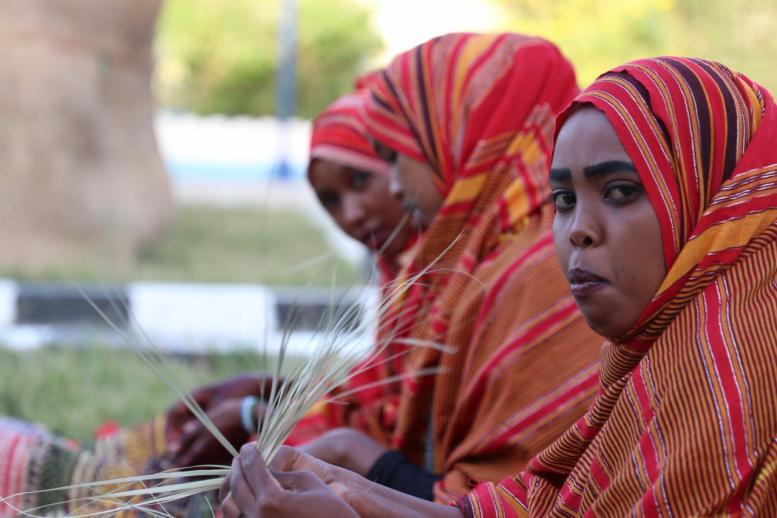
Source: Dsvdedommel
A few weeks before Ramadan starts, women dressed in guntiino, a traditional dress draped around their waist and a sarong-like cloth wrapped over their head would prepare Sareen. They mix different types of sorghum and wheat and prepare it by soaking it, draining it, and drying it under the sun to later crush the dried paste with a pestle and mortar until it becomes a porridge. It would later be mixed with either milk or olive oil before it’s eaten.
This dish is consumed by Somalilanders during sohoor starting from the night before Ramadan. If you happen to be awake at sohoor time, you would hear loud calls in the streets often by a local member of the neighborhood, or a “Shiekh”, or one of his apprentices walking around and waking people up for sohoor. Suhoor is a light meal consumed on the night before fast, specifically before the morning call of prayer, to sustain nourishment through an entire day of fasting.

Source: Google
Ramadan is known to be the month of generosity, and in every city, in Somaliland, a number of youth organizations coordinate together to volunteer and work on charity programs. They would arrange to collect money from the wealthy, businesses, and diaspora to buy food and clothes to distribute to poorer families. These charities would also arrange daily iftar meals in Mosques’ yards open for the homeless and poor families who cannot afford to buy food to break their fast.
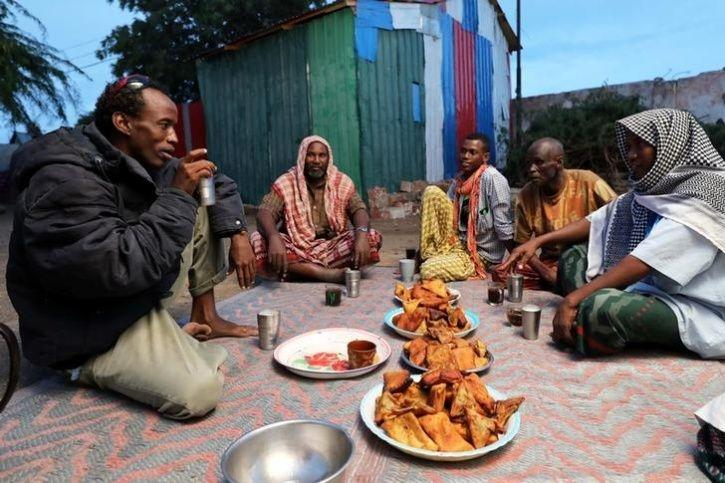
Source: India Times
Restaurants and cafes are all closed during the day, and no business is expected to be serving food or beverage while people are fasting. But once the fast is ended by Maghreb (sunset) time, they open up and start serving dates and water before moving along to serve what’s on the menu. In neighborhoods, male members tend to go to the neighboring mosque for Maghreb prayers before coming back to have iftar with their families. Usually Somalilanders prefer spending their Ramadan gatherings with their families for a warm homemade iftar.
Somaliland’s unique traditional iftar meals are served with various dishes like Bagiye, a crunchy roughed pastry made from crushed black-eyed beans blended with chopped onions, garlic, and peppers. Bagiye is usually served with a shidni [shigni] a spicy green sauce, even though they are great just on their own. Sambusa, a stuffed triangular pastry filled with either onion and minced meat, tuna, or braised lentils, is also common for iftar.
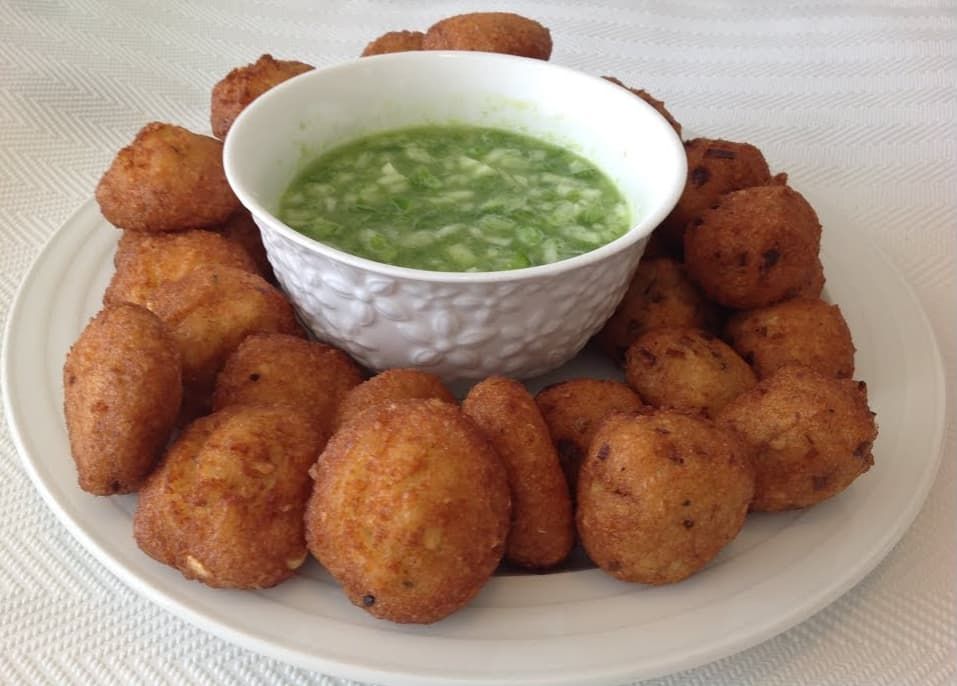
Source: Youtube
Another traditional iftar dish that is served is Anjero (Canjeero), also known as Lahooh (Laxoox), a light, spongy sourdough pancakes considered one of the most delicious Somali dishes. The Anjero batter is made of a combination of different types of flours, including sorghum, wheat, and white corn flour. The batter is prepared in the morning and is left to ferment for a few hours. An hour before iftar, the batter is cooked on circular pans on a stove. Normally, Anjero is the common breakfast food among Somalis and usually is eaten on its own dipped in oil and sugar, and accompanied by a cup of tea. But during Ramadan, Anjero is a favorite iftar dish and is served with liver and onions, or with suqaar, a meat stew. Anjero is not only a delicacy but also is traditionally believed to be healthy food. Fresh fruits and custard are also occasional fixtures on iftar tables.
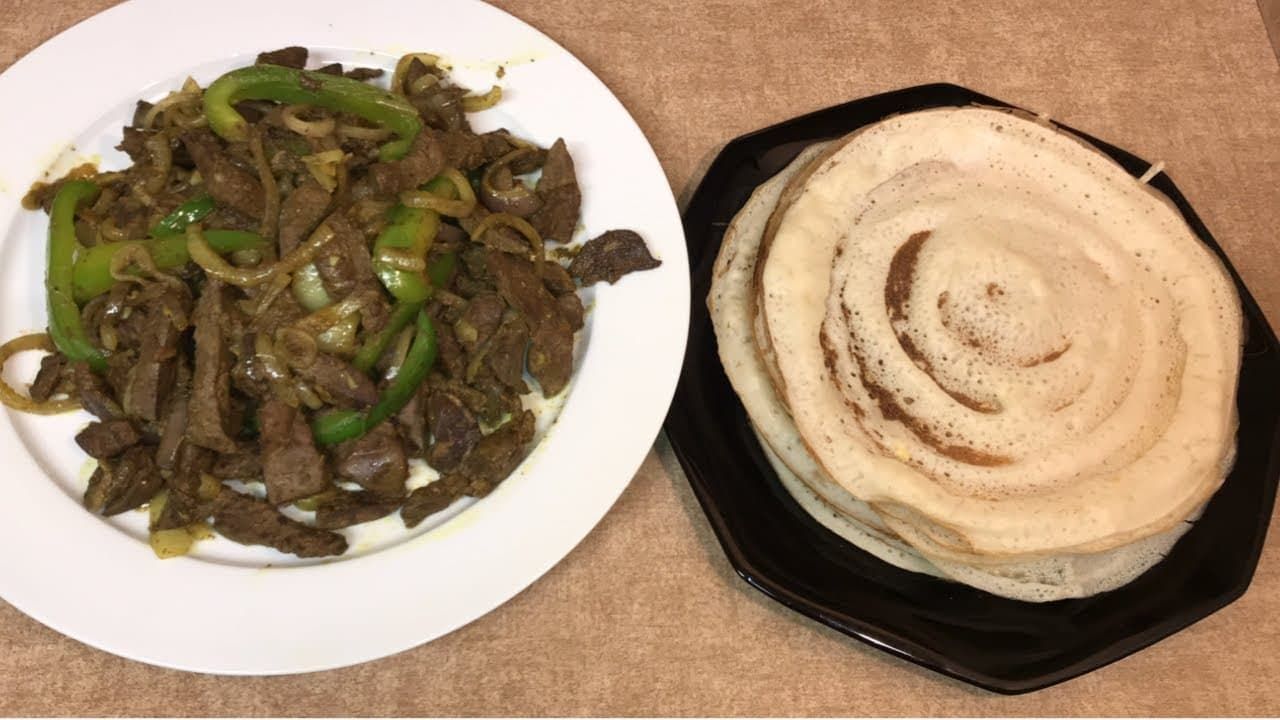
Source: Youtube
It is a tradition to have Somali Qahwe after iftar and before the Taraweh prayers. Qahwe is the Somali version of coffee milk spiced with cinnamon and cardamom.
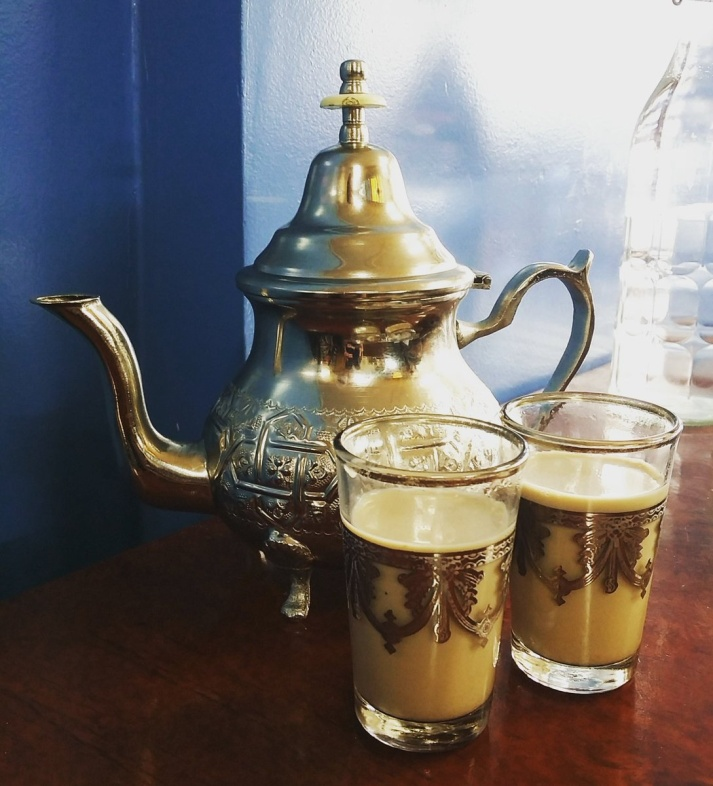
Source: Twitter
After iftar, families attend the Maxadiro, a short lecture held by an invited Shiekh, where he recites Islamic stories similar to those of the Jummah prayer lectures. These Maxadiros are often held every night before Taraweeh prayers.
After taraweeh prayers, people often visit restaurants and caweys to spend their evenings listening to Nabi Amaan, Islamic praisal songs, while the band plays kaban and cuud.

Source: Youtube
Hours after iftar, and for Somalilanders to ready their fast for the next day, they arrange their pre-dawn (sohoor) meal once again. Another warm plate of sareen.
This is a typical Ramadan day in Somaliland that repeats for 30 days as people wait for Eid Al Fitr, three days of celebration of ending the fast. However, during the last ten days of Ramadan, the local bazaar is exuberant with excitement as Eid approaches. Shops tend to open until late at night, and the streets stay lit and active until Sohoor time. Parents take their children for shopping to buy new clothes and toys.
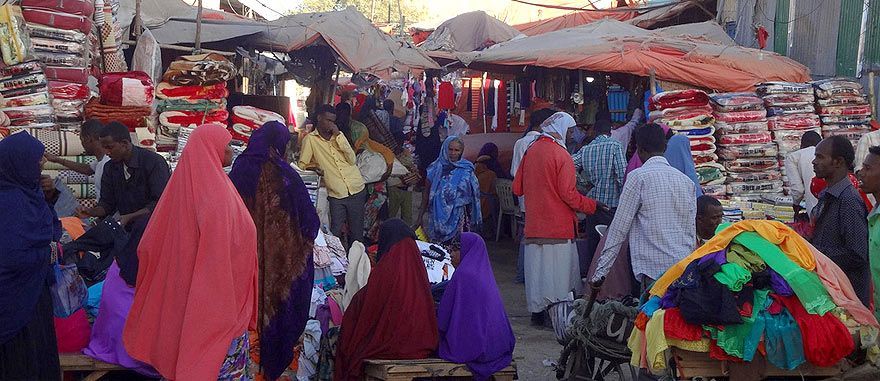
Source: Pinterest
Until last year, Ramadan was the same way it usually is every year. The COVID-19 outbreak had changed many traditions starting with local gatherings. Community iftar meals in mosques and public areas were restricted as well as the Quranic congregations. including the Islamic lessons in the mosque. Sadly, the pandemic continues until this Ramadan, hence COVID-19 awareness is obligated to be included in Islamic Ramadan preaching and prayers. A lot of social gatherings, including; taraweeh and caways are banned, however, Ramadan in Somaliland still carries that sense of festivity for everybody and collectively uplifts the community spirit despite the social distancing.
